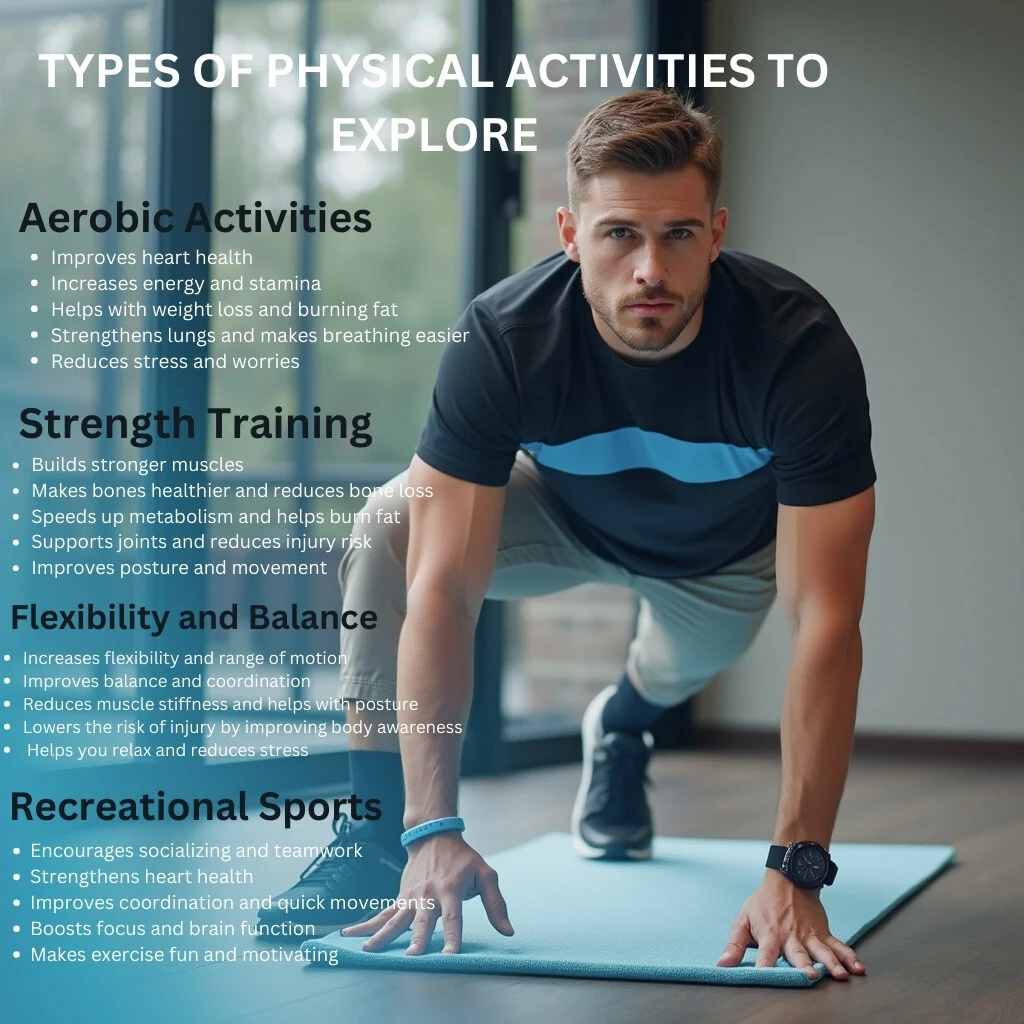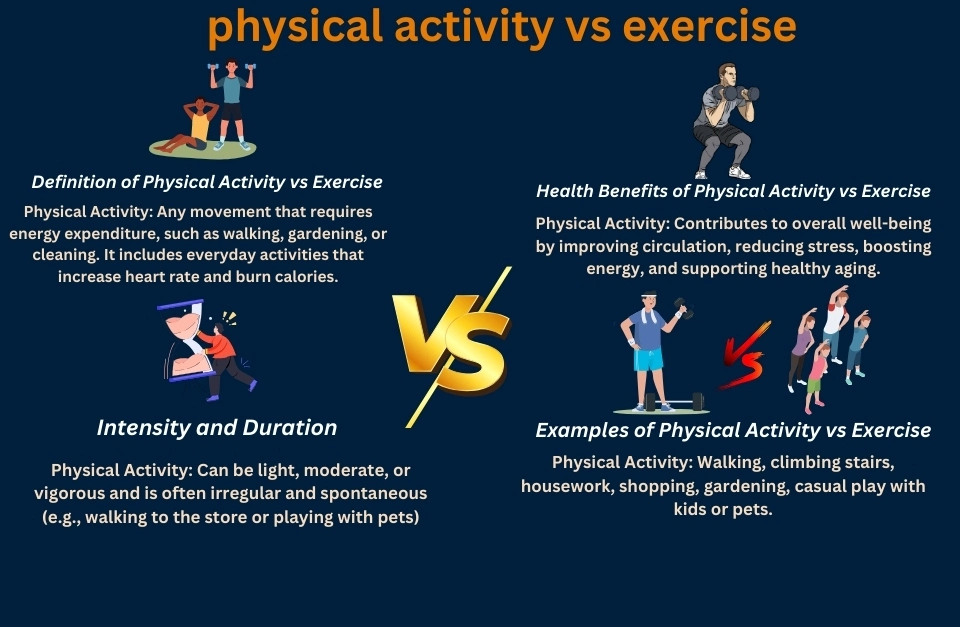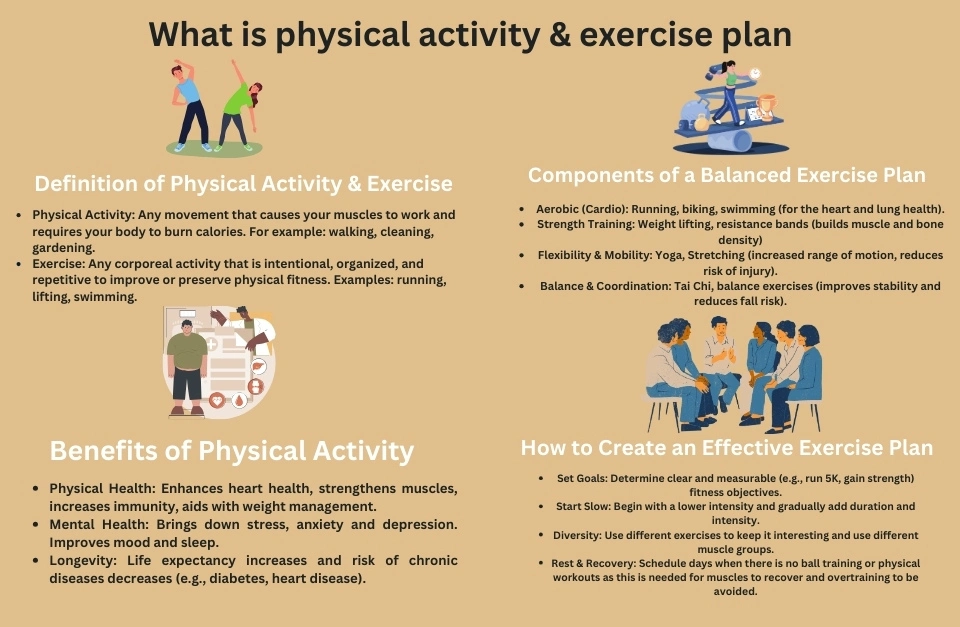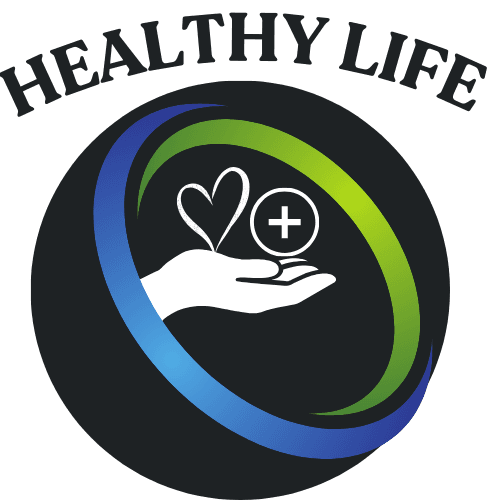Physical activity boosts health, reduces disease risk, and improves mental well-being. Explore expert guidelines, tips for all levels, and heart health benefits. Physical activity includes every movement that burns energy, including taking the stairs, dancing in your living room or walking briskly through the park. It’s path to better health, to recognizing your body’s potential and to gradually, one movement at a time, looking to a healthier, happier you.
This guide covers the indisputable benefits of physical activity, types of movement to try for every lifestyle, and how to work it into your routine. Whether you’re a novice just starting out or a fitness veteran trying to make your routine more effective, this blog empowers you to maximize those movements.
What Is Physical Activity?
Physical activity is any movement that uses your body to burn energy. Whether through casual, daily activities like gardening or walking or more formal sequences like running or yoga, it is about getting your body into motion so that you can stay active and healthy.
Exploring Different Forms of Physical Activity
Exercise can take many forms, each offering its own benefits to your overall health and well-being.
Daily Movements: Climbing stairs, vacuuming or walking to the grocery store. These activities are small yet powerful, they increase your energy throughout the day.
Exercise: Planned, structured physical activity intended to improve fitness — think jogging, yoga or resistance band exercises.
Leisure Activities: Movement in the form of enjoyable activities, as in playing soccer, riding a bike through a picturesque trail, or hiking through public green spaces.
Every form of movement fights for a stronger, healthier you.”
mindblowing benefits of physical activity
Exercise isn’t just about improving your body; it changes your life. Here’s why moving your body can improve your overall health.
Physical Health Benefits
Cardiovascular Health: Lower heart disease risk, work the heart muscle, and promote circulation.
Healthier Bones and Muscles: Helps prevent osteoporosis and arthritis and increases muscle and joint health.
Weight management: exercise helps to maintain energy balance, leads you to bigger fat loss and improves your metabolism.
Immune System Boost: Regular movement means your body is in a better position to fend off illness.
Mental Health Benefits
Stress and anxiety reduction: Physical movement reduces levels of Stress hormones, letting serotonin and endorphins (“feel-good chemicals”) boost your mood.
Enhanced Memory and Brain Health Better supply of oxygen and nutrients to your brain will develop your memory, concentration.
Boosted Energy + Focus: Fight off fatigue and get through your day sharp and focused.
Long-Term Perks
Prevention of Chronic Diseases: Reduce your chances of developing chronic conditions such as diabetes, hypertension, and osteoporosis.
Longer Life: An active lifestyle leads to a longer, fuller life—and enhanced quality of life in later years.
Keep in mind that any little effort you make today is an investment in your future!
Types of Physical Activities to Explore

Everyone’s preferences and strengths are different, so there isn’t a one-size-fits-all approach to getting exercise. Below are various forms of movement to sample based on your objectives.
Aerobic Activities: Increase cardiovascular endurance through exercises such as swimming, cycling, jogging, or dancing.
Strength training: Increase muscle mass and resistance endurance through weight lifting, resistance bands, or bodyweight exercises (pushups, for example).
Flexibility and Balance: Incorporate yoga, Pilates, or dynamic stretching throughout your week to improve agility and joint health. These are especially beneficial for older adults or people rehabilitating from injuries.
Daily Activities: Convert chores into chores into chances — use the stairs, tidy up your setting, or walk on your lunch break.
Every movement matters. Even baby steps can lead to top results!
physical activity pyramid
It will become the Physical Activity pyramid that teaches individuals how to balance different types of physical activity in the correct quantities for good health. This structure adheres to a food pyramid approach, with a number of levels suggesting the Type of Activity you should be doing and how often. Here’s a broad overview of the pyramid:
Base Level (Activities of Daily Living): These are actions that can be seamlessly integrated within everyday life — walking, occupational stairs, gardening and housework, amongst others. These should be done as much as is possible.
Second Level: Aerobic Exercise (Jogging, Cycling, Swimming, Dancing…etc. It is suggested to perform them three to five times per week to enhance cardiovascular well-being.
Third Level (Strength and Flexibility): It includes strength training exercises like weightlifting and flexibility exercises such as yoga or stretching. 2-3 times a week, aim to build muscle strength and improve flexibility.
TOP Level (Sedentary Activities): These will include activities you should minimise, such as watching TV or playing video games for long periods of time.
If you compare your day to the pyramid, the pyramid will remind you to do more of some activities and incorporate a bunch of activities to have a well-balanced healthy lifestyle. Just let me know if you need more focused content on specific aspects of the physical activity pyramid!
How Much Physical Activity Do You Need?

The World Health Organization (WHO) and the Centers for Disease Control and Prevention (CDC) recommend adults get at least 150 minutes per week of moderate aerobic activity or 75 minutes of vigorous activity. For strength training, have exercises that involve all major muscle groups two or more days a week.
Customize Activities to Fit Your Lifestyle
For fat loss: Do more high-intensity exercise, such as interval running or circuit training.
To hang out: Try yoga or breathwork sessions to calm your mind and body.
For cardiovascular health: Try walking trails, swimming, or biking.
Start small. Even if you can only manage 10 minutes at a time, that adds up — and consistency always trumps intensity in the long run.
Common Barriers to Staying Active and How to Overcome Them
We understand — life can get overwhelming. However, given slight versatility, you can get past almost anything. Here’s how.
Lack of Time? Squeeze in a 10-minute high-intensity interval training (HIIT) workout or take those work calls on a walk.
No Motivation? Pick a good one, like planting, dancing, or hitting the trails with pals. Discover your passion and you’ll want to continue.
Time-constraint or Physical Disability? Adapted exercises, such as chair yoga or water aerobics, can be adapted for your needs.
There is a solution to every challenge. You can do more than your excuses.
Tips for Getting Started
Getting started with exercise is not as hard as you think.
Develop Realistic Goals: Concentrate on consistency—not perfection. Begin small and build up gradually.
Enjoy Doing Things You Like: Dancing, walking on a trail or simply playing catch.
Create a Routine: Set aside time to move every day, just like you would with important meetings or errand.
Grab a Buddy: It’s just more fun with friends. Having accountability makes it easier (and more fun) to stick to habits.
Celebrate Wins: Keep track of your progress, and treat yourself for each milestone achieved, however small.
Start today. Everything you do now will pay off big time in the future.
physical activity vs exercise

Exercise, however, is a specific type of physical activity. Knowing the difference may help you take steps toward a healthier, more active lifestyle.
Physical activity refers to any movement that burns energy. That could be something as simple as walking to the store, cleaning your house or playing with your kids in the yard. Gardening, choosing the stairs over the elevator or dancing around your living room — all of that is considered physical activity. The beauty of physical activity is that it occurs organically in your life — it’s about moving your body in whatever way serves you best.
Exercise, however, is more specific. It is a planned and purposeful subset of physical activity, performed with an intent to improve or maintain physical fitness. Consider activities such as running, cycling, yoga and strength training. Exercise, to a large degree, adheres to a specific pattern — It’s something you plan into your week, and it usually has a specific goal, whether that’s building strength, enhancing endurance or, simply, Feeling Better.
Both exercise and movement is important. They collaborate to maintain your body limber, supple, and energetic. And you don’t need to train for the marathon to enjoy the benefits — simply adding movement to your day, in any way, is a victory. Start small. GO TAKE A SHORT WALK, STRETCH FOR A FEW MINUTES, OR ENGAGE IN A PREFERRED ACTIVITY LIKE DANCING OR GARDENING. Every movement matters.
The key? Keep moving. Climbing any stairs, hitting any gym — progress arises in the form of those first steps. Take yours today!
Keeping Up the Motivation Over the Long Haul
The crux of it all, motivation will lead you success. Here are a few tips for keeping the fire alive.
Mix It Up: New routines stave off boredom. One week you cycle, the next you do yoga.
Focus on Feelings, Not Results: Make note of how you feel when you’re done working out, energized, happy and accomplished, and let that be your fuel.
Connect with a Community: Participate in fitness groups, online forums, or public health initiatives to feel connected and motivated
And remember, progress is much more important than perfection. Acknowledge all accomplishments—big and small.
health condition that is not influenced by physical activity
Exercise typically has no effect on the following:
- The tendency (family history) of some diseases or conditions
- Medical conditions that interfere with physical activity
It is also to be noted that the health benefits have not been taken in consideration as it promotes overall health and aids in the better management of an already existing medical condition. Always consult with a medical doctor before beginning any fitness regimen. To sum up, all the conditions can also be managed with physical activity but some might have to limit their routine.
Many factors contribute to a positive disposition, but physical exercise can alleviate the negative emotions. Here’s to a better, more healthy and happier lifestyle! So keep on moving and keep on getting them benefits. Any type of progress is still progress, so dream big and start small! So please don’t let discouragement set in if you’re unable to do one form of physical activity or another, just find what works for you and get it done.
Which Physical Activity Burns the Most Calories?
The best way to burn calories is to find activities that increase your heart rate and use multiple muscles at once. Individual results may vary, but some of the most calorie-intensive activities include:
High-Intensity Interval Training (HIIT): More having to do with short intervals of hard work followed by short periods of recovery, HIIT workouts are legendary for torching calories. HIIT combines cardio and strength exercises, which can help you maximize calorie burn in a short amount of time.
Run or Jog: Whether you hit the pavement or jump on a treadmill, running or jogging is a great way to burn those calories. It uses large muscle groups and can be modified for various fitness levels. Plus you can be out in the fresh air while doing this calorie-burning workout.
Cycling: If you’re more about the love of pedaling outdoors or indoors on a stationary bike, cycling is a wonderful cardio workout that can help you burn calories right away. They also come with adjustable levels of resistance so you can tailor them to your fitness level and aspirations.
Swimming: Plunge into the cool waters to take on a body workout. Swimming is a low-impact, high-calorie-burning workout that can engage multiple muscle groups simultaneously. That makes it an excellent choice for those looking for a full body workout that is easy on the joints.
The best physical activity is the one that you love and can engage in longevity. Doing activities that releases your passion and energy. Continue to push yourself, take note of your improvements, and appreciate the difference a consistent exercise regime makes in all aspects of your life. Moving On, Stay Motivated and Enjoy Your Way to a Healthier Happier Life!
Question: why is physical activity important
Exercise is essential for overall health. Here are a few reasons why being active is so important:
Reduces Risks of Chronic Diseases: Exercise helps prevent chronic diseases, such as heart disease, type 2 diabetes and some cancers.
Enhances Mood: When you exercise, endorphins are released, which can enhance mood and reduce anxiety and Depression symptoms.
Boosts Energy: Exercise can make you feel more energized and reduce fatigue.
Keeps Bones and Muscles Strong: Weight-bearing exercises build strong bones, while resistance training keeps muscle mass from deteriorating.
Encourages Sleep: Regular exercise has been proven to promote better sleep, improving your overall health and mood.
In brief, physical activity is crucial for both bodily wellness and Mental Health wellness. It can help protect against a variety of diseases, improve mood, increase energy levels, and promote better sleep. Every little bit helps, and that is the important fact in physical activity in order to improve quality of life. So why not get moving today and enjoy all of the benefits of getting active! Be sure that every attempt matters, and persistence is essential. You got this! It’s time to make your health a priority and be the best you inside out. Let’s go!
What is physical activity & exercise plan

What is a physical activity plan? It details several activities, objectives, and schedules that can keep you fit and healthy. A good plan will account for your starting fitness level, your interests and your lifestyle so that the model is both fun and sustainable.
The following steps will help you achieve your best exercise plan:
Set Specific Goals: Established well defined objectives like weight reduction, strength building, and better heart health.
Engage in Enjoyable Activities: Opt for exercises that you enjoy and are engaging, such as walking, biking, swimming, or dancing.
Mix It Up: Use a range of activities to target different muscle groups and avoid boredom. Perform aerobic, strength, flexibility and balance exercises.
Schedule your workout at a time that complements your lifestyle and adhere to a consistent new routine.
Start Gradual: If you are a newbie to exercise, start with brief and not-so-intense workouts and slowly progress the duration and intensity.
Monitor Progress: Record your actions and victories in order to remain motivated and revise as needed.
Be Adaptable: Be willing to adjust your plan, whether that be interests or situation may also change.


1 Comment
nice